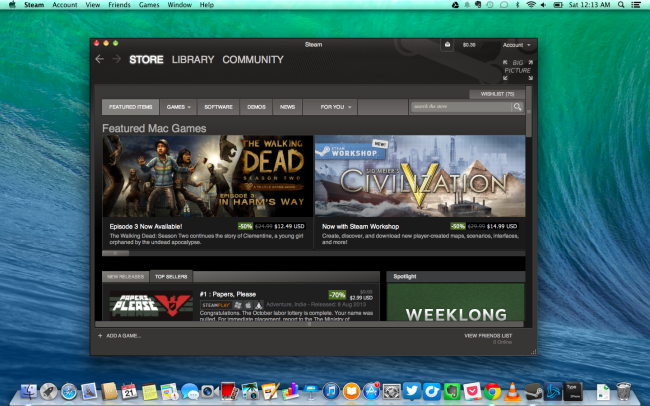The basic way to open a file on the Mac — and on Windows as well — is to double-click a file. By default, it opens with the application that is assigned to work with its file type; so, if you have Microsoft Office on your Mac, a.doc file opens in Word, and an.xls file opens in Excel.
All Mac® users know about the Mac App Store®, and most have probably used it to get an app or two. If you’re also a Parallels Desktop® for Mac user, there’s another store you should check out: the Microsoft Store.
- 4) Startup Windows and plug in your drive with the support software on it, and proceed to install the files. This allows Windows access all your Mac’s hardware and features necessary to run properly. 5) Install your games on Windows and enjoy! Related article: OWC Reveals Apple Boot Camp Support for.
- For more information about using Windows on your Mac, open Boot Camp Assistant and click the Open Boot Camp Help button. If you're using an iMac (Retina 5K, 27-inch, Late 2014) or iMac (27-inch, Late 2013) or iMac (27-inch, Late 2012) with a 3TB hard drive and macOS Mojave or later, learn about an alert you might see during installation.

The Microsoft Store is accessible from Windows 8 or 10—but in all practical terms, this means onlvidy Windows 10, since Windows 8 is used so rarely these days.
The Microsoft Store is for all things to play or consume on Windows 10: movies, music, apps, books, fonts, extensions to the Edge browser, and even hardware. In Apple® terms, it’s iTunes®, the Mac App Store, iBooks®, and the Apple Store® all rolled into one. However, in this blog post, I will focus mainly on apps available from the Microsoft Store.
Accessing the Store
How To Get Mac Os On Windows
Just as Apple has the App Store app, Microsoft has the Microsoft Store app. (See Figure 1.)
Here are some apps I have downloaded from the Microsoft Store, none of which are available on the Mac App Store:
| Games | Productivity | Learning | Just Interesting |
| Age of Empires: Castle Siege | Microsoft Whiteboard | Kakitai: Learn Japanese by Writing | Nebo* |
| Crossy Road* | Office 365 Home* | Sensavis Visual Learning Tool | Plumbago |
| Microsoft Mahjong | Sway* | Penbook | |
| Age of Empires: Definitive Edition | Delve* | GestureSign | |
| Age of Sparta | Microsoft Math | Microsoft Font Maker | |
| Translator* | |||
| Fluid Math |
*Available for the iPhone®/iPad® in the Apple App Store.
All of these apps run fine for me on my MacBook Pro® in a Windows 10 VM using Parallels Desktop 14—with the single exception of Age of Empires: Definitive Edition. I used every setting I know to get this app to run with acceptable performance, but in the end, I gave up. (Age of Empires is my favorite game of all time, as I posted back in 2014.)
You can predict whether an app in the Microsoft Store will run in Parallels Desktop by looking at its system requirements from within your virtual machine. (See Figure 2.)
Figures 3–5 show some other apps from the Microsoft Store running in Parallels Desktop on my MacBook Pro.
Video 1 shows some games from the Microsoft Store running in Parallels Desktop 14 on my MacBook Pro:
And Video 2 shows some of the 3D models available for the Sensavis Visual Learning Tool:

As of today, there are about 800,000 Windows 10 apps in the Microsoft Store, as opposed to only about 11,000 in the Mac App Store. There are a number of excellent apps in both stores, and the Mac user with Parallels Desktop can take advantage of both to find the perfect app for your needs.
Have you found a particularly useful or novel app on the Microsoft Store? If so, tell us about it in the comments.